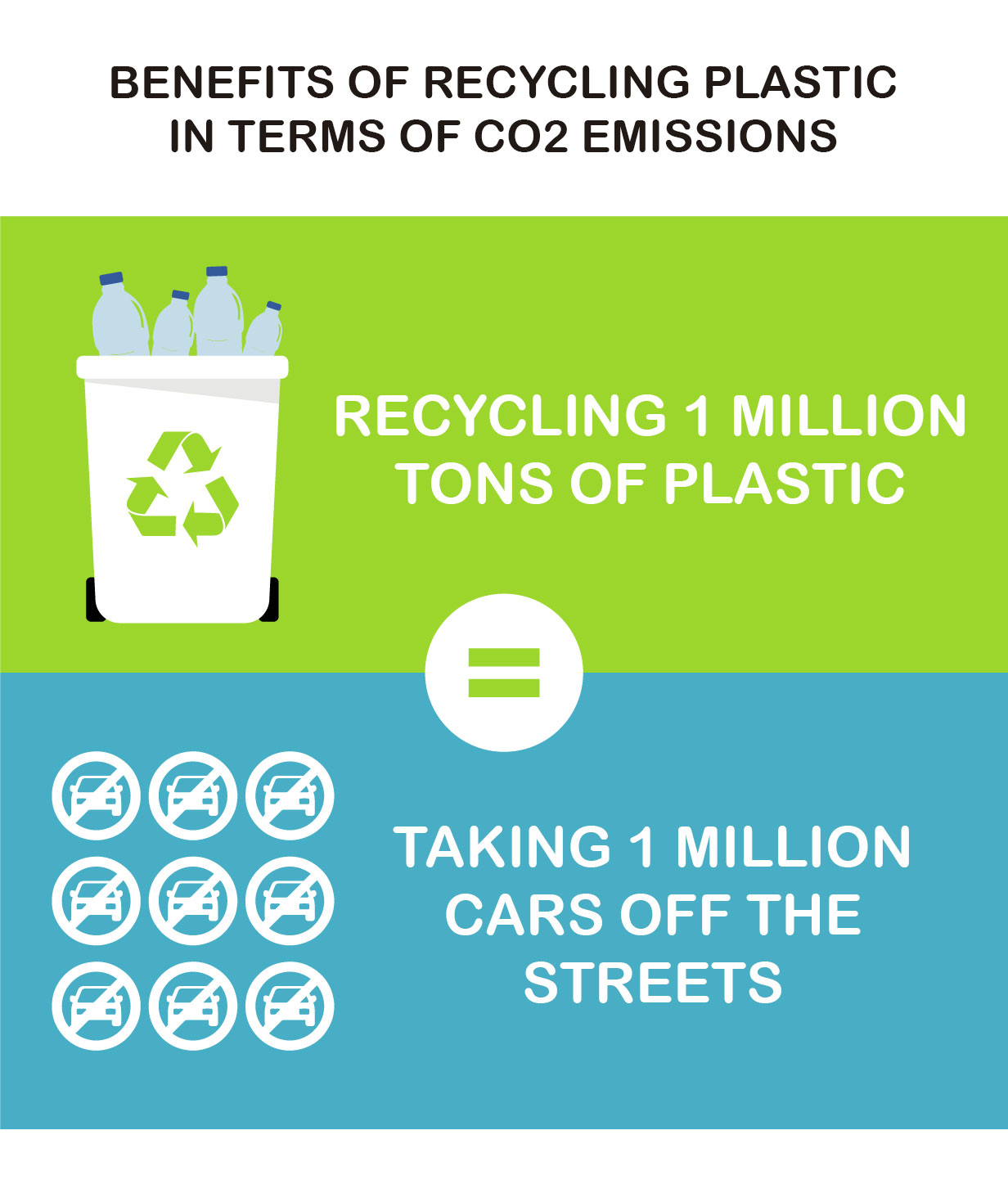-80% CO2
The production of recycled plastic compared to virgin plastic means an 80% reduction in the emission of CO2 into the atmosphere (reduction of the carbon footprint).
CO2

SEABED

Information collected from the European Commission COM(2018)
THE POWER OF RECYCLING
Recycled materials consistently outperform virgin materials across all environmental indicators. In the case of plastics, there is a general consensus that recycling can reduce carbon emissions associated with the processing and manufacturing of virgin plastic by between 30% and 80%.
If we managed to recycle all plastic globally, we could prevent between 30 and 150 million tons of CO₂ emissions per year—the equivalent of shutting down between 8 and 40 coal-fired power plants.
Currently, only about 9% of the world's plastics are recycled. This figure highlights the enormous potential—and the urgent need—to intensify our efforts toward a more sustainable future.
Increasing plastics recycling has the potential to:
- Slow down the life cycle growth of LOL (greenhouse gas) emissions from plastics.
- Prevent them from entering the marine environment.
Recycling in Life Cycle Assessment (LCA)
Some Life Cycle Assessments (LCAs) assume that all products are collected, recycled, and reused at the end of their life. However, this assumption rarely reflects reality. End-of-life product management largely depends on the recycling infrastructure and rates in each city or country.
The end-of-life scenario has a significant impact on LCA results and, therefore, on strategies to reduce environmental impact. Various studies highlight that closed-loop PET packaging recycling systems are particularly effective, achieving high rates of material recovery and reuse.
(Information sourced from a recent report by Imperial College London)


